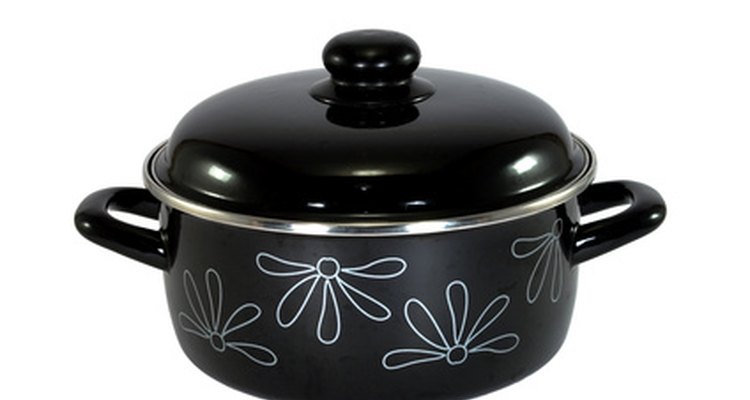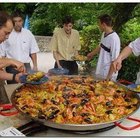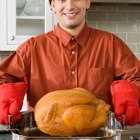
Braising pans and Dutch ovens have similar uses in the kitchen. They differ in shape and some cooking applications. In addition to the type used in home kitchens, there is also a commercial variety of braising pans.
Built for Braising
Both types of cooking equipment are designed for braising, stewing and other types of one-pot cooking. They are heavy, lidded and ovenproof, usually with two side handles. A braising pan is sometimes called a rondeau, buffet casserole or braiser. Dutch ovens are also known as French ovens.
Shape
Braising pans have short sides and wide bottoms. Dutch ovens are deeper and narrower than braising pans. A braising pan may have straight or sloped sides; Dutch ovens have straight sides.
Cooking Applications
Braising pans are designed for searing. They have a wider cooking surface than Dutch ovens to maximize the food's contact with the bottom of the pan, like a saute pan. Dutch ovens can sear smaller amounts of food, but their steeper sides can accommodate a greater volume of liquid for boiling or braising.
Commercial Braising Pans
In a commercial kitchen, a braising pan is also called a tilting skillet. These pans have a capacity of 10 to 40 gallons and are used for frying, braising, warming, boiling and steaming.
Related Articles

What Is a Braising Pan?

The Advantages of Wok Cooking

What is a Paella Pan?

Can You Bake Sliders?

Difference Between a Broiling & ...

What Is the Best Cookware for Electric ...

What "Tools of the Trade" Cookware is ...

Alternatives to a Deep Fryer

How to Use a Roaster Oven to Cook a ...

How to Clean an Oven Liner

Substitute for a Springform Pan

Tools Used in Food Processing

What Kind of Pan Do You Need to Bake ...

What Is a Hibachi Restaurant?
How to Cook in Tabletop Convection Ovens

Does a Roaster Oven Cook Faster Than ...

How Long Can You Cook Beef Ribs at 300 ...

For How Long Do You Bake a Cake in an 8 ...

What Depth Is Considered a Shallow ...

Glass Pie Pan Baking Tips
References
Writer Bio
Alissa Pond Mentzer worked in biotech research and educational publishing before becoming a freelance writer in 2005. She has contributed to textbooks for The Mcgraw-Hill Companies and National Geographic School Division and writes science articles for various websites. Mentzer earned a Bachelor of Arts from Rutgers University in anthropology and biological sciences.
Photo Credits
pot image by dinostock from Fotolia.com